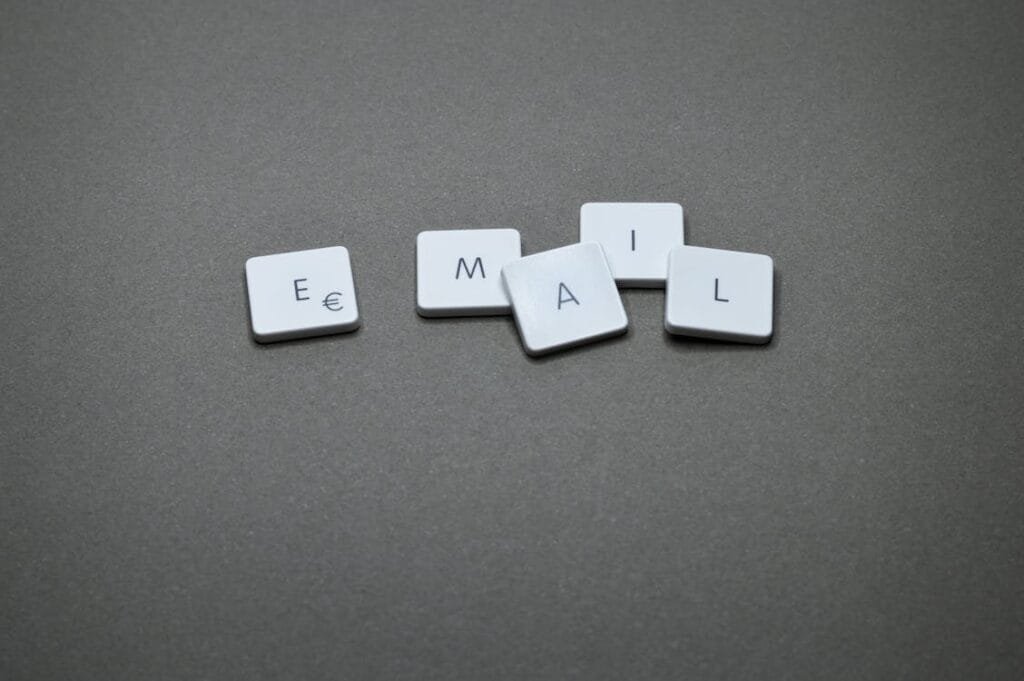As we look towards 2024, the landscape of email marketing continues to evolve, presenting businesses with an array of tools each claiming to be the best. Among the plethora of options, AWeber and Omnisend have emerged as prominent contenders. But which one is truly the best fit for your business? In this comprehensive guide, we’ll embark on a detailed journey comparing AWeber and Omnisend, dissecting their features, ease of use, pricing, and more, to help you make an informed decision for your email marketing strategy in 2024. Let’s start by delving into one of the most crucial aspects of any email marketing tool
Automation Capabilities: The Key to Efficient Email Marketing
The power of automation in email marketing cannot be overstated. It’s the driving force behind timely, personalized, and effective communication with your audience. Both AWeber and Omnisend offer automation features, but how do they stack up against each other?
AWeber’s Automation: Simplicity Meets Efficiency
- Ease of Use for Beginners and Pros: AWeber’s automation tools are designed for ease of setup and use. Whether you’re a seasoned marketer or just starting out, creating automated email sequences is intuitive and straightforward. This ease of use is particularly beneficial for small business owners or marketers who prefer to focus more on strategy and content rather than technical complexities.
- Pre-Designed Campaigns for Quick Implementation: AWeber offers a range of pre-built automation campaigns, making it quick and easy to launch your campaigns. From welcome sequences to lead nurturing and customer engagement, these templates are customizable, allowing you to align them with your brand and objectives.
- Effective for Essential Marketing Needs: While AWeber might not boast the most advanced automation features in the market, its offerings are robust enough for most small to medium-sized businesses. The platform provides a balanced mix of functionality and simplicity, making it an ideal choice for those who need reliable, straightforward automation.
However, for businesses seeking more complex, customizable automation workflows, AWeber’s capabilities might fall short. It’s perfect for foundational email marketing but may not fully meet the needs of those requiring intricate automation schemes.
Omnisend’s Automation: Advanced and Comprehensive
- Sophisticated Automation Workflows: Omnisend allows you to build complex automation workflows tailored to various subscriber actions and behaviors. This capability enables you to craft highly personalized email experiences, improving engagement and conversion rates.
- Dynamic Segmentation and Personalization: With advanced segmentation capabilities, Omnisend enables you to deliver highly targeted content to different audience segments. This level of personalization ensures that your messages are always relevant and impactful.
- Intuitive Yet Powerful Automation Builder: The platform offers a visual automation builder that is both intuitive and feature-rich. This tool is invaluable for visualizing and crafting intricate email flows, ensuring no subscriber falls through the cracks in your marketing strategy.
While Omnisend offers more sophisticated features, it can come with a steeper learning curve. It’s best suited for those with a solid understanding of email marketing or those willing to invest time in learning the platform to leverage its full potential.

Related: Check out our free SEO suite

Pricing Structures: AWeber vs Omnisend
When it comes to selecting the ideal email marketing tool, understanding the pricing structure is crucial. It’s about balancing cost against the features and value offered. AWeber and Omnisend, each with their distinct pricing models, cater to various market segments. Let’s dive into the pricing structures of AWeber and Omnisend, to see which platform offers the best value for your investment in 2024.
AWeber
- Free Plan: For up to 500 subscribers, offering basic features like email templates and automation.
- Pro Plan: Pricing starts at $19.99/month for up to 500 subscribers and increases with the number of subscribers. Includes advanced features like split testing, behavioral automation, and detailed reporting.
Omnisend
- Free Plan: Includes basic email marketing features, allowing up to 15,000 emails per month but with a daily limit.
- Standard Plan: Starts around $16 per month for up to 500 subscribers, including automation workflows, SMS campaigns, and audience segmentation.
- Pro Plan: Starting from around $99 per month for up to 500 subscribers, adding features like advanced reporting, web push notifications, and unlimited emails.
- Enterprise Plan: Custom pricing for large-scale businesses, offering features like dedicated account management, deliverability support, and custom IP address.
AWeber’s Pricing: A Model of Transparency and Scalability
AWeber’s approach to pricing is characterized by its clarity and scalability, making it an attractive option especially for small businesses and individual marketers. AWeber offers a free plan, a boon for those just venturing into email marketing or working within tight budgets. This plan includes a basic set of features, allowing you to kickstart your email marketing without any upfront financial commitment.
As your business grows, AWeber’s pricing scales up based on the number of subscribers, following a tiered model. This approach is beneficial as it allows businesses to predict and manage their expenses in line with their growth. The transparency in AWeber’s pricing means access to all the features within your chosen plan without worrying about hidden costs or additional charges for essential functionalities.
However, as your subscriber list expands, the costs with AWeber can increase, potentially becoming a significant expense for businesses with a large number of subscribers. It’s crucial for growing businesses to consider how these increasing costs align with the platform’s value and the returns they are achieving from their email marketing campaigns.
Omnisend’s Flexible Pricing Options
Omnisend presents a more flexible and competitive pricing model, offering various plans to suit different business sizes and needs. Like AWeber, Omnisend also provides a free plan, which includes basic features suitable for small-scale campaigns and startups. This plan is particularly advantageous for businesses looking to explore email marketing without immediate investment.
As you move to Omnisend’s paid plans, you find options that offer more advanced features, including enhanced automation capabilities, sophisticated segmentation tools, and more detailed analytics. These plans are designed to offer value at different levels, catering to businesses as they evolve and their marketing demands become more complex.
Omnisend’s pricing model is structured to be competitive, offering advanced features at various price points. However, to access the most comprehensive features and higher sending limits, subscribing to higher-tier plans is necessary, which could be a consideration for businesses with limited budgets.
User Interface and Ease of Use: AWeber vs Omnisend
In the competitive world of email marketing tools, the user interface (UI) and overall ease of use are pivotal in determining how efficiently and effectively you can execute your campaigns. Both AWeber and Omnisend have distinct approaches to their user interfaces, catering to different user preferences and needs. Let’s delve deeper into how these two platforms compare in terms of their user interfaces and overall user experience.
AWeber’s User Interface: Prioritizing User-Friendly Design
- Intuitive Navigation: AWeber’s dashboard and overall layout are designed for simplicity, making it easy for users to find and use the features they need without any hassle. This ease of navigation is particularly beneficial for those who may not be very tech-savvy.
- Drag-and-Drop Email Builder: The platform includes a drag-and-drop email builder, which simplifies the process of creating engaging and visually appealing emails. Users can choose from a variety of templates and customize them to fit their brand, all without needing any design skills.
- Clear Campaign Management: Managing email campaigns in AWeber is straightforward, with clear options for setting up broadcasts, automations, and segmenting your audience. The platform ensures that these key functionalities are accessible and easy to manage.
However, while AWeber is highly efficient for basic to intermediate marketing needs, users seeking advanced customization and a broader range of features might find the platform’s interface a bit limited.
Omnisend’s Interface: Balancing Advanced Features with Usability
- Sophisticated Yet User-Friendly Design: While offering a range of advanced features, Omnisend’s interface remains user-friendly and easy to navigate. This makes it suitable for users who have some experience in email marketing and are looking to leverage more complex functionalities.
- Visual Automation Editor: Omnisend includes a visual editor for creating automation workflows, which is both powerful and intuitive. This tool allows users to easily design complex automation sequences, enhancing the effectiveness of their marketing strategies.
- Enhanced Customization Options: The platform provides greater flexibility in email design and customization compared to AWeber. Users can create highly personalized emails with advanced design options, catering to those who seek a higher degree of control over their email aesthetics.
While Omnisend offers more sophisticated functionalities, the platform manages to maintain a balance in terms of user-friendliness. Users may need some time to fully explore and utilize all the features available, but the overall experience is designed to be intuitive and accessible.
Integrations: Expanding Your Marketing Ecosystem
The ability to integrate seamlessly with other business tools is a crucial feature of any email marketing platform. It can significantly enhance the effectiveness of your marketing strategy by creating a more cohesive and efficient workflow. AWeber and Omnisend both offer integration capabilities, but their approaches and the extent of these integrations vary. Let’s examine how AWeber and Omnisend handle integrations and what this means for your email marketing strategy.
AWeber’s Integration Approach
AWeber provides a wide range of integration options, covering various categories such as CRM systems, eCommerce platforms, social media networks, and other essential business tools. This extensive array of integration choices underscores AWeber’s commitment to versatility and adaptability, acknowledging the diverse range of tools businesses use today.
The ease of setting up these integrations is a notable strength of AWeber. The platform ensures that integrating with other tools is straightforward, accommodating users who may not have extensive technical knowledge. This approach is particularly advantageous for small businesses or solo entrepreneurs who need to synchronize their email marketing with other digital tools efficiently and without complex technical processes.
While AWeber offers a broad spectrum of integrations, it’s important to note that the depth and customization options of these integrations might not be as extensive as those offered by some more specialized platforms. For businesses requiring highly specific or niche integrations, AWeber’s options might provide basic functionality but not the deep, seamless connectivity needed for more complex operations.
Omnisend’s Focused Integration Capabilities
Omnisend takes a more focused approach to integrations, concentrating on providing essential and highly functional integration options. The platform has carefully selected its integration partners to ensure they add significant value to users’ email marketing efforts. These integrations are tailored to include connections with major eCommerce platforms, website builders, and CRM systems.
This focused approach to integrations is central to Omnisend’s strategy of enhancing the overall functionality of its email marketing tool. Each integration is designed to seamlessly blend with the platform’s features, enhancing the user experience and the effectiveness of their campaigns. This method is particularly beneficial for businesses that rely on a specific set of tools for their operations, ensuring smooth functionality and enhanced efficiency.
However, for users who rely on a broader range of tools or very specific niche software, Omnisend’s more concentrated range of integrations might seem limiting. In such cases, businesses might need to explore additional solutions or third-party platforms like Zapier to bridge any gaps in their marketing tech stack.
Conclusion
As we conclude this detailed comparison between AWeber and Omnisend, it’s evident that each platform brings its unique strengths and caters to different aspects of email marketing. The decision on which tool to choose for 2024 will depend largely on your specific business needs, your marketing strategy’s complexity, and the level of expertise you possess in email marketing.
AWeber stands out for its ease of use, making it an ideal platform for small businesses, startups, and individuals who are either new to email marketing or prefer a straightforward, no-frills approach. Its user-friendly interface, combined with a wide range of integrations and a simple yet effective automation system, makes AWeber a reliable and efficient choice for those looking to execute effective email marketing strategies without the need for complex functionalities.
Conversely, Omnisend offers a more sophisticated solution, catering to businesses that require advanced automation capabilities, deeper integrations, and a more dynamic approach to email marketing. With its focus on eCommerce and advanced segmentation tools, Omnisend is particularly well-suited for businesses looking to dive deep into personalized marketing and leverage a more comprehensive set of tools to enhance their marketing efforts.
Read Next:
- Dispute Resolution for Smart Contracts: Challenges and Opportunities
- The Changing Landscape of Mergers and Acquisitions in the Technology Sector
- How Game-Changing is the Digital Rupee going to be?
- Maximizing Profit with the Markup Revenue Model: An In-Depth Look
- Demystifying Advisory Shares: A Comprehensive Guide (US Law)






















Comments are closed.